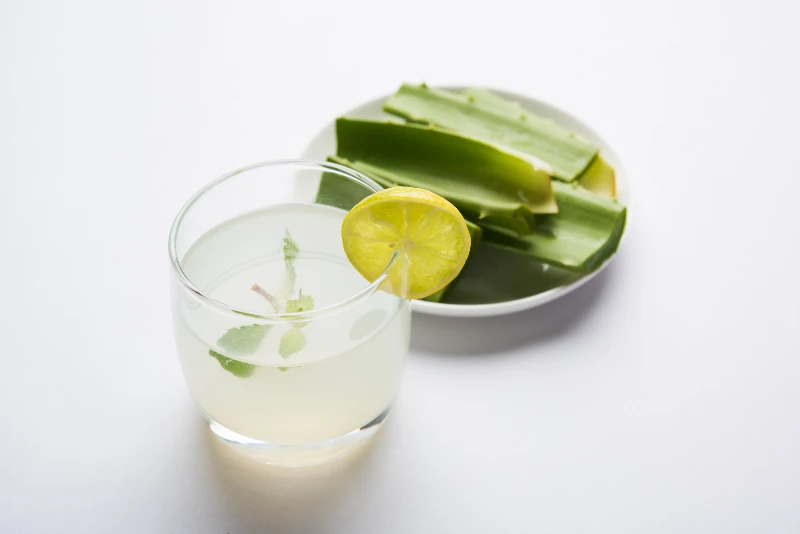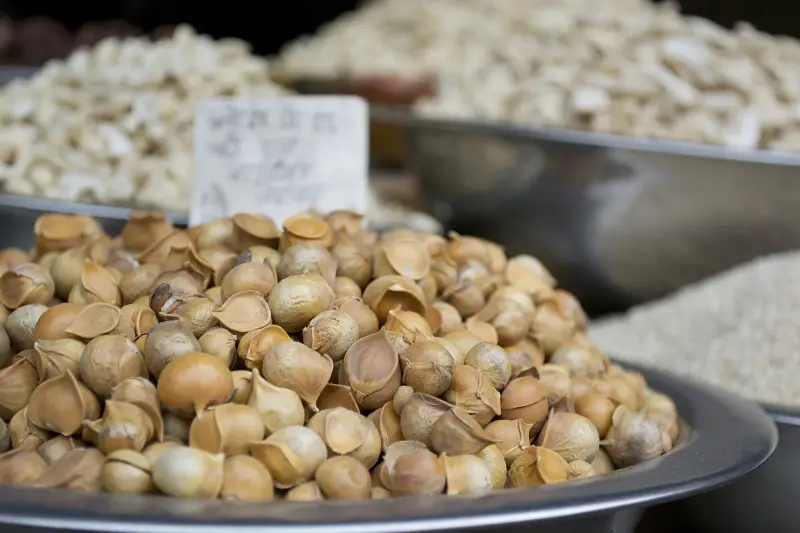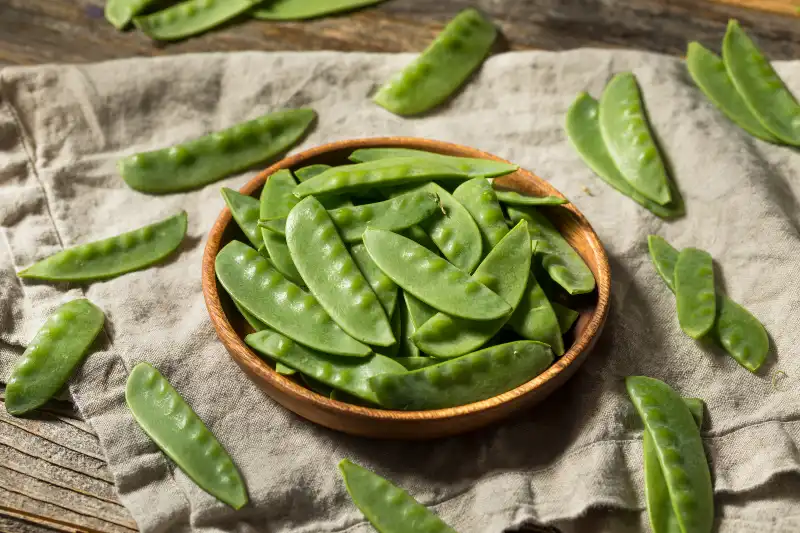Beans are a superfood for diabetics. This indicates that beans are an exceptional option for diabetic patients. And, the veggie offers many health and nutritional benefits. The ADA produced a list of useful food products for people with diabetes. Beans contain rich amounts of vitamins, minerals, fiber, and antioxidants. They might aid in preventing various health problems. Beans rank on the top of the list of veggies. This article explains beans, their nutritional value, the benefits of beans for diabetics, and the best types of beans to have.
Table of Contents
- Types of Beans
- Chickpeas or Bengal Gram
- Black Beans
- Green Gram (Green Moong)
- Kidney Beans
- Lima Beans
- Benefits of Beans
- Carbohydrates
- Fiber
- Protein
- Vitamins and Minerals
- Beans for diabetics
- How Does Soluble Fiber Act?
- Side Effects of Beans
- Ways of Adding Beans to the Diet
- FAQs:
-
- Which bean contains the greatest amount of protein?
- How frequently can a person consume beans?
- Do beans contain starch?
- What are the demerits of having beans?
-
Types of Beans
There are many varieties of beans available these days. Various types are more known and common in various areas of the world. Below are a few examples:
Chickpeas or Bengal Gram
Chickpeas are an unbeatably healthy food choice. They aid in keeping the blood glucose levels steady and regulate diabetes. Chickpeas contain very low GI scores and are great snacking alternatives.
Boiled or roasted chickpeas are delicious and healthy alternatives. They provide a lot of fiber content too. Moreover, people use chickpea flour as an alternative to other flour types due to its several health benefits. On top of this, chickpeas are also great for weight management.
Black Beans
Black rajma beans are also known as turtle beans. They are among the healthiest options for a person with high blood sugar. These beans pack several good nutrients such as folate, fiber, potassium, and too much protein.
One-third cup serving of black beans contains roughly 75 calories. And, it is a fair quantity to add to a person’s meal plan. Moreover, black beans work well for managing cholesterol levels. They aid to decrease the levels of bad cholesterol in the body.
Green Gram (Green Moong)
It is another well-accepted lentil and is an outstanding healthy option among lentils. Green gram is great for people with high blood sugar. Also, it is safe for diabetics as they contain a GI value of 38 only. It contains a rich number of antioxidants that makes it a must-have for diabetics. Green gram is a rich source of plant compounds and also offers various minerals to the body.
Kidney Beans
Benefits of rajma for diabetes patients? Kidney beans are another well-known form of beans. They pack essential minerals that are good for a person’s body and aid in improving health. Kidney beans supply a person with an excess of fiber, iron, and protein. Besides that, kidney beans contain rich antioxidants that improve a person’s immunity.
Kidney beans contain excellent blood glucose-lowering effects. Furthermore, they are wonderful healers and comprise more important benefits.
Lima Beans
These beans are also referred to as butter beans. Lima beans are superfood for diabetics as it gives a good amount of protein and fiber. One cup of lima beans may fulfill nearly half of a person’s daily iron consumption.
Summary
All these varieties of beans promote overall health in many ways. And, are great for maintaining normal blood glucose levels too.
Benefits of Beans
Beans are superb, inexpensive sources of minerals, protein, and fiber. Including beans in a diet may aid individuals to keep their glucose levels stable, as it is researched that beans are good for diabetics. Also, beans aid in keeping the body healthy.
Carbohydrates
Beans are an excellent source of protein and fiber. Even if, they comprise carbs, the beans glycemic index is low and does not result in considerable spikes in glucose levels.
Beans are complex carbs. A person’s body digests this type gradually as compared to other carbs. This aids in maintaining the blood sugars for a long time. Half a cup serving of the following cooked beans consists of:
- Calories: 125 calories
- Carbs: 15 g
- Protein: 7 g
- Fat: 0-3 g
Baked beans might comprise more carbs. Also, sugar in beans, that too cans of baked beans might be too much. Hence, it is important to check the label before purchasing.
The recent ADA strategies note that there are not a perfect fraction of calories from carbs, fat, or protein for all diabetic patients. Rather, they advise that individuals follow a diet depending upon their individual requirements. Individuals may discuss their meal plan with a doctor or a dietitian.
Fiber
Fiber-containing foods such as beans might lower the impact of high-GI foods on glucose levels. This is due to the reason that fiber delays the digestive process. This aids in keeping the glucose levels stable for a long time.
Consumption of beans provides an individual with a steady supply of sugar rather than an instant energy rush that comes with simple carbs. Fiber provides extra benefits for cardiac health. The AHA notes that dietary fiber helps in improving the levels of blood cholesterol. Also, it helps in reducing the risk of cardiovascular problems, stroke, and obesity. All of these are likely complications of diabetes.
Protein
Beans contain a rich amount of plant-based protein. Protein is vital for the growth and repair of body tissues. The body might break down protein into sugar to be used for energy. Yet, this takes a long time than breaking down carbs, delaying the process of digestion.
High-protein food items might aid an individual in feeling fuller for longer. Also, it reduces the risk of obesity and overeating. As per the ADA, half a cup of beans provides the protein corresponding to 1 ounce of meat (excluding saturated fat). They offer a reasonable, low-calorie way to include protein in the diet.
Vitamins and Minerals
Beans are rich in nutrients such as vitamins and minerals. It contains slight or no trans fat, salt, and cholesterol. Due to this, beans are great at reducing an individual’s risk of diabetic problems. Beans comprise several vital vitamins and minerals, such as:
- Potassium
- Magnesium
- Iron
- Folate
- Calcium
Summary
In relation to the nutritional profile of beans, here’s a quick breakdown of nutrients in half a cup serving of beans:
- Calories: 120
- Carbs: 20 g
- Fiber: 10 g
- Protein: 9 g
- Fat: 0.7 g
- Sodium: 0 to 5 mg
- Potassium: 300 to 500 mg
Note: Canned beans that are not rinsed comprises more sodium.
Beans for diabetics
Research indicates that adding food products comprising soluble fiber in a meal may aid in reducing blood glucose and A1C levels. A study also looked at type 2 diabetic patients who consumed a cup of beans or lentils daily as part of a low GI diet. After 3 months, their levels of A1C fell by ½ a percent point. Another study depicted that soluble fiber reduced the levels of A1C by nearly 0.6%.
How Does Soluble Fiber Act?
Soluble fiber (also termed viscous fiber) produces a gel in a person’s gut. After that, the gel delays carb digestion. This in turn delays the absorption of sugars. The result is reduced blood glucose and HbA1C levels. Other food items containing soluble fiber can be barley, oats, carrots, etc.
Thinking of soluble fiber, such as beans as part of a meal plan may also reduce the levels of LDL (“bad”) cholesterol. Soluble fiber gets attached to cholesterol in the small intestine. This prevents its absorption into the bloodstream. After that, cholesterol gets eliminated.
If one of the person’s goals is to lose weight (which may unexpectedly aid the blood glucose levels and cardiovascular health), beans may assist. Their high protein and fiber content act to reduce the appetite and keeps a person full in order that he or she consumes less.
What about those carbohydrates in beans? It’s a good question, and yes, beans comprise carbohydrates. One serving of beans for the purpose of carb counting is half a cup (one-third cup for baked beans). This counts as one carbohydrate in addition to one lean protein. It is important to note that half a cup of beans offers as much protein as one ounce of meat excluding saturated fat, as per the ADA. Tracking the blood glucose levels utilizing a meter or using CGM (continuous glucose monitoring) are outstanding tools for assisting a person to understand how beans affect blood sugars. Thus we can say that beans are good for diabetics.
Summary
Beans are a great option for diabetic patients. One of the fundamental benefits of beans is the presence of soluble fiber in them.
Side Effects of Beans
Many individuals may add beans as part of a diabetic diet. On the other hand, if an individual does not have much dietary fiber, they must augment their bean consumption gradually. This is due to the reason that the digestive system may take some time to get accustomed to high-fiber foods, which may result in acidity and bloating.
A person’s body’s intestinal enzymes fail to digest fibers and starches present in beans. In its place, a process referred to as bacterial fermentation breaks down such fibers and starches. It is this fermentation method that results in additional gas.
While few individuals might find this uncomfortable, it is not damaging. Canned beans are a good shortcut to cooking raw beans. Yet, canned beans frequently comprise too much salt. Rinse the beans carefully prior to eating to lower their salt content.
Summary
Refried beans and bean dip often comprise extra fats, salt, and other constituents that may decrease the useful effect of beans. Hence, it is good to read the nutrition labels cautiously.
Also Read: Can Diabetics Eat Jaggery?
Ways of Adding Beans to the Diet
Is garbanzo beans good for diabetics? Hummus comprises garbanzo types of beans. Beans are a good inclusion in any person’s diet. Individuals may include beans in chilis or salads, make use of them as a side or main dish, or use them in bean burgers.
Just like many veggies, raw forms are the healthiest ones. Purchasing raw beans implies an individual has absolute control over the way of cooking or the ingredients that are added. Soak raw beans in water for about ten hours prior to using. After that, rinse the beans methodically. This aids in decreasing the adverse effects like acidity or bloating.
Canned beans might be a great choice over raw beans. Also, they provide a shortcut to the cooking procedure. While utilizing canned beans, opt for a product with no extra salt or wash the beans well before use to lower any additional salt.
While purchasing baked beans, it is important to go for brands with a reduced total carb and sugar content. Also, individuals may prepare baked beans at home to completely control the sugar and carb count.
To add more beans to a person’s diet, try some ideas:
- Adding navy beans in soups
- Consuming hummus consisting of garbanzo beans (chickpeas)
- Preparing bean burritos
- Cooking bean chili, making use of only beans, or substituting meat with beans
- Including red or black beans in taco meat
- Crushing black beans as a base for a veggie burger
- Including garbanzo beans or kidney beans in a salad
Summary
Beans provide a number of health benefits for diabetics. They are a versatile, nutrient-dense superfood helpful for regulating high blood glucose levels and fighting disease. Benefits for diabetic patients involve high fiber and protein, low fat, and low GI scores. If discussing with a dietitian, talk to them regarding including more beans in their meal plan.
Also Read: Is Watermelon Good for Diabetics?
FAQs:
Which bean contains the greatest amount of protein?
Boiled soybeans, or edamame, offer the greatest amount of protein among beans. In around half a cup of edamame, a person gets a gigantic 32% of the daily value (DV) for protein on a 2,000-calorie diet.
How frequently can a person consume beans?
Beans are highly nourishing that the recent guidelines suggest tripling the bean consumption from one to three cups per week.
Do beans contain starch?
Starch is a type of carb, also known as a complex carb. As it is formed of long chains of sugar molecules. Starchy food products may be potatoes, peas, corn, rice, beans, pasta, grains, etc.
What are the demerits of having beans?
The most common ill effects of beans include acidity and intestinal uneasiness. These are not risky, however, might be disagreeable and even aching for a few individuals. When an individual includes it in their diet, they must augment the quantity slowly to give their digestive system time to adjust.
















